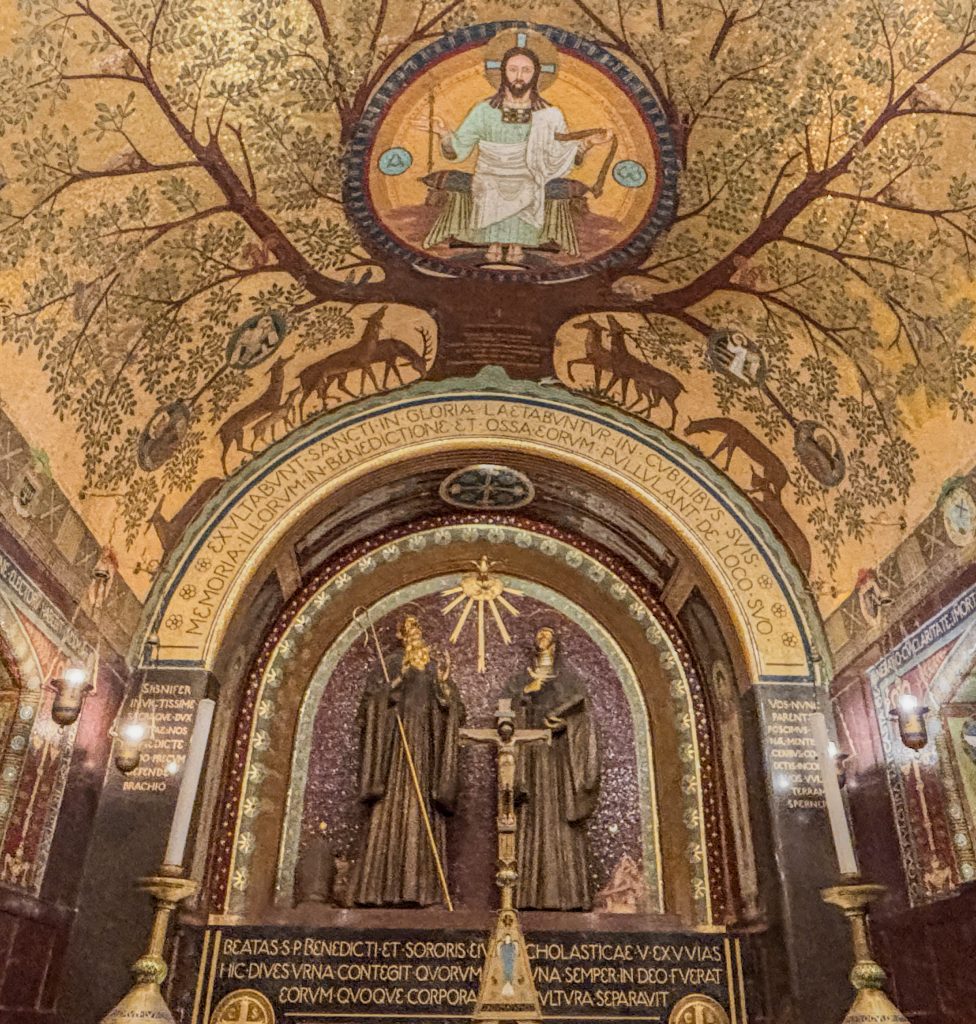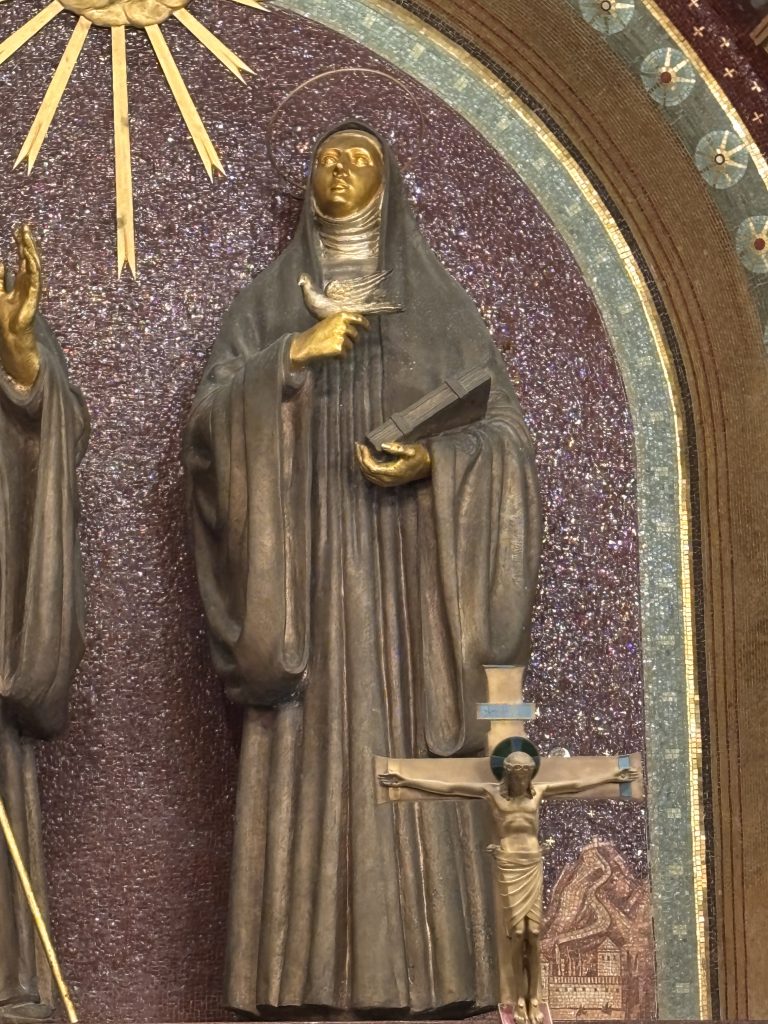Scholastica
Benedictine Nun of the 5th Century
Saint Scholastica is considered the foundress of the Benedictine nuns, a monastic tradition that emphasizes prayer, work, and community.



Biography – Saint Scholastica was the twin sister of the founder of Western monasticism, Saint Benedict. They were born around 480 CE to a prosperous family near Spoleto, Italy. Their mother passed away during birth and the siblings were exceptionally close from their early years. Pope Gregory the Great later wrote she was consecrated from infancy to the service of the Lord. When Benedict committed to live a solitary life, he quickly formed a group of disciples and founded the monastery of Monte Cassino (529CE) and composed the “Rule of St. Benedict” to govern the practices of the monks. They were forbidden to own worldly goods and practiced a life of “Ora et Labora” (Prayer and Work).
Scholastica followed her brother’s desire to dedicate her life in service to God and founded a monastery with a group of pious women about five miles from Monte Cassino. She beautifully adapted “The Rule of St. Benedict” for her women followers. The nuns remained cloistered instead of working outside the convent like the monks, taking vows for lives of communal prayer, individual “lectio divina,” and recitation of liturgical texts. Hers was the first Benedictine convent, and today there are over thirteen-thousand Benedictine nuns across the world, still following her rule, yet today serving their communities instead of remaining cloistered. Most of what we know of Scholastica is from Pope Gregory the Great’s writing on St. Benedict in his Dialogues (c.590). His account is brief and focused on her final days. The twins were busy leading their monasteries but would meet together once a year to “praise God and discuss Spiritual matters.On their meeting day one year, as the sun began to set and signify time to walk back to their cells, Scholastica implored Benedict to stay through the night to discuss the joys of heaven. He refused, citing the rules of behavior. Immediately, Scholastica began to pray, and the sky poured forth a flood of rain. Benedict demanded to know what she had done! Her calm response was, “I asked you, but you were unwilling to listen to me. I asked my Lord and He listened to me.” The two remained for the night and talked of spiritual things.
Gregory wrote that Scholastica gained the victory that evening because her desire was rooted in love, and ‘God is love.’ Joan Chittister, a Benedictine nun who writes extensively on Scholastica, discusses how we can learn from this example of two holy people of different genders learning from each other. Scholastica was a strong, deeply devoted woman who could carry a theological conversation. “Her story reminds us that a woman has as much power in the eyes of God as any man, and that we must recognize women, too, as spiritual guides.” Three days later, Benedict in his cell received a vision of his sister’s soul departing for heaven as a dove. He was overcome with rejoicing instead of grief at seeing her glory in death and arranged to have her buried in his own tomb.9 Benedictines Saint Scholastica as someone who “could do more because she loved more.”
Resources:
- Griffiths, Fiona J. “Siblings and the Sexes within the Medieval Religious Life.” Church History 77, no. 1 (2008): 26–53.
- Chittester, Joan. “Law Is Never Greater than Love.” Accessed February 19, 2025. https://mailchi.mp/benetvision.org/doubt-is-the-mother-of-conviction-9088340?e=17d1d5d22e.
- Gregory I, Pope, and Aurelius McMahon. The Life of Saint Benedict, Patriarch of the Western Monks. Baltimore, Printed by J. Murphy, 1880. http://archive.org/details/lifeofsaintbened00greg.
- Ritter, Judy. St. Scholastica : Graced Woman of Hope. San Jose, CA: Resource Publications, 2005. http://archive.org/details/stscholasticagra0000ritt.
